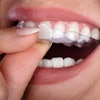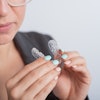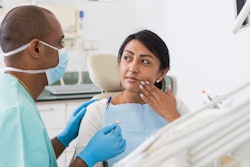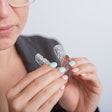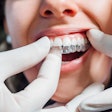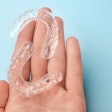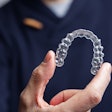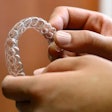
The rapid adoption of technology without careful review may have led to unproven surgeries, specifically for temporomandibular disorders (TMDs), opening clinicians to legal repercussions. The article was published in the Journal of the American Dental Association.
In addition to moving away from outdated mechanical beliefs and the fast adoption of innovations like 3D imaging, orthodontists should integrate TMD research into clinical practice to improve outcomes, protect patients, and sidestep legal troubles, the author, Dr. Nicolás Skármeta, MSc, an orofacial pain specialist at Hospital del Salvador, Chile, wrote.
"Strict adherence to mechanistic orthodontic principles and reliance on imaging findings can result in overzealous treatment protocols," Skármeta wrote (JADA, July 27, 2024).
Over the past 10 years, the latest biomechanics and imaging diagnostics have advanced orthodontics. However, the quick adoption has led to new surgeries, including procedures for TMD, without them being backed by evidence-based research.
Relying only on diagnoses based on magnetic resonance imaging (MRI) or cone-beam computed tomography can lead to extreme treatment protocols. For example, strictly following imaging findings for problems like disc displacement or condylar asymmetries may lead to treatment plans that don't factor in a patient's symptoms, the author wrote.
Also, this diagnostic approach may guide patients toward unnecessary temporomandibular joint surgeries, including arthroscopic discopexy, to prevent future deformities, which has become a trend that clinicians face in practice, Skármeta wrote.
Therefore, it is critical that clinicians assess the underlying principles of new systems concerning orthodontic best practices, specifically TMD treatments, and thoroughly evaluate them before putting them into practice. In 2024, the outdated practices of condylar positioning, jaw growth methods, and positioning techniques in TMD prevention and treatment remain in the planning of orthodontic surgeries despite evidence and expert recommendations challenging them, Skármeta wrote.
These practices should be withdrawn for multiple reasons, including that anterior disc displacement is observed on MRI diagnoses among asymptomatic patients. There is no clinical test or measurement that accurately predicts TMD development, and a significant body of evidence-based research indicates that orthodontic treatments probably won't modify or cure TMD, the author wrote.
Furthermore, clinicians must merge clinical knowledge from TMD research into their practices, ignore outdated orthodontic principles, and focus on evidence-based practices to ensure patient safety and better treatment outcomes, he wrote.
"If scientific validation alone does not suffice to deter unsupported practices, the increasing awareness and potential legal repercussions may necessitate a reevaluation and stricter adherence to scientifically validated practices," Skármeta concluded.

